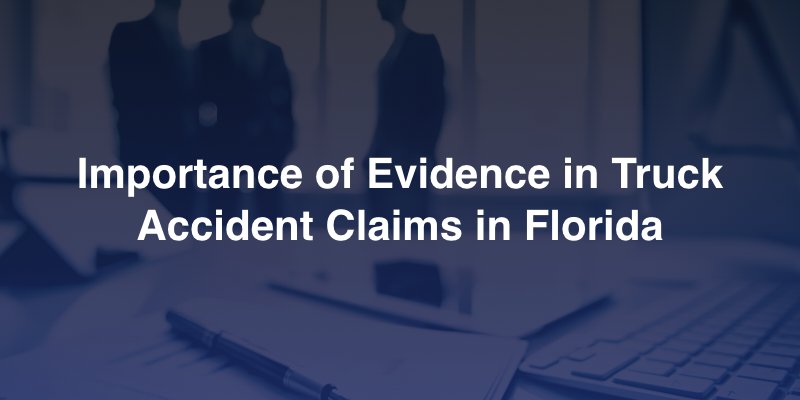
Evidence matters when it comes to truck accident claims. Unfortunately, the types of evidence and the sheer amount of evidence needed to prove liability after these incidents occur can be overwhelming, particularly for those without much legal experience. As we review the most important types of evidence used to prove liability after a truck collision, we encourage you to reach out to a skilled truck accident attorney with experience handling these types of challenging injury claims.
Photographs and Video Surveillance
Photographs and video surveillance are crucial pieces of evidence in truck accident claims. Immediately after an accident, taking photographs of the scene, vehicle damage, skid marks, road conditions, and any visible injuries can provide a clear picture of what happened. If there is any available video surveillance from nearby traffic cameras, businesses, or dashcams, it should be secured as soon as possible. These visual records can help reconstruct the accident and provide undeniable proof of fault.
Statements From Eyewitnesses
Eyewitness statements are another vital component of a truck accident claim. Individuals who saw the accident occur can provide valuable insights that may not be evident from the physical evidence alone. Witnesses can describe the actions of the drivers involved (at least, from their perspective), weather conditions, traffic signals, and other factors that might have contributed to the accident. Gathering contact information from eyewitnesses and obtaining their statements promptly is essential to preserving their accounts.
Electronic Logging Device Data
Electronic Logging Devices (ELDs) are required by the Federal Motor Carrier Safety Administration (FMCSA) for most commercial trucks. These devices record driving hours and ensure that truck drivers comply with hours-of-service regulations designed to prevent fatigue-related accidents. ELD data can show whether a driver was on the road longer than legally allowed or if they took the required rest breaks. Accessing this data can provide evidence of driver fatigue or non-compliance with safety regulations, contributing to establishing liability.
The Event Data Recorder
Larger trucks are equipped with an Event Data Recorder (EDR), which you may know as a “black box.” The EDR records information about the truck’s operation, such as speed, brake usage, engine performance, and other critical data moments before, during, and after a crash. This information can be invaluable in determining how the accident occurred and whether the truck driver was at fault. Data from the EDR can be used to reconstruct the accident and support claims of negligence or recklessness on the part of the truck driver.
Truck Company Maintenance Records
Truck companies are required to maintain detailed records of their vehicles’ maintenance and inspections. These records can reveal whether the truck involved in the accident was properly maintained and if any mechanical issues were known but not addressed before the crash. Regular maintenance is crucial for the safe operation of large commercial vehicles, and lapses in this area can lead to catastrophic accidents. Maintenance records can help establish if the trucking company failed to uphold its duty of care, contributing to the accident.
Cargo Information
The type of cargo a truck carries and how it is loaded can significantly impact the vehicle’s handling and stability. Overloaded trucks or improperly secured cargo can cause a driver to lose control, leading to accidents. Records detailing the cargo, weight, and loading procedures can provide evidence of negligence on the part of the trucking company or the party responsible for loading the truck. Ensuring that cargo is within legal weight limits and properly secured is a critical safety measure, and violations can be a key factor in truck accident claims.



